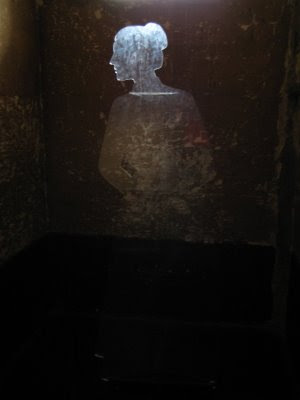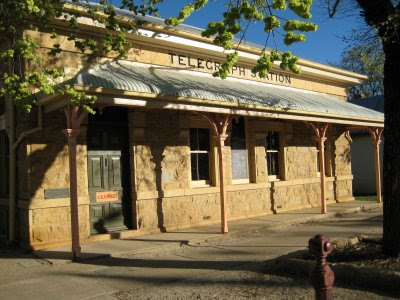Got back home again on Thursday night, after getting to most of the postgraduate/early career training seminar on medievalism and contemporary media at Wollongong, co-ordinated by my dynamo of a research collaborator,
Louise D'Arcens. The idea was to bring a small group of folk together with proposals, drafts, or even just glimpses of ideas for research or creative projects and see what kind of expert assistance and training would be useful to bring them to fruition. In fact the participants were mostly working on film and television, not so much on other media, and so Louise tailored the two main sessions on Wednesday to match.

The event was reported on the University of Wollongong's
website, complete with photo of most of the group (curses! got there too late to be in the photo).
Most medievalist scholars in our neck of the woods, at least, have come to the field from medieval literary studies, but there was also a strong interest in the group in music and performance studies. Because I had only got back from the
Great North-East Victorian Bike Ride the previous day, I flew up on Wednesday morning and unfortunately missed most of
Chris Barker's presentation on Cultural Studies, but boy, am I glad I was there for
Adrian Martin's discussion of film and medievalism.
Sometimes when two disciplines meet, or attempt to talk to each other, it's a very wary and uneasy process; by contrast, this was a perfect meeting. Adrian spoke for an hour and a half, and I could have listened to him all day. Just sometimes you get a perfectly pitched, directed and thoughtful talk; and this was one such. Adrian had thought quite carefully about medievalism, and even made me think more warmly of Umberto Eco's Ten Little Middle Ages, which sometimes irritate me. Adrian also moved us away from the obvious territory of Hollywood cinema, and showed us bits of Eisenstein's
Alexander Nevsky and Roehmer's
Perceval, while also mentioning a number of other European film-makers who experiment with medievalism. He then led an equally long and fascinating discussion.
Wollongong is a most beautiful campus, and the town itself also seems interesting, though I didn't see much beyond a pub and a Thai restaurant. I stayed near the beach and in the morning, took myself for a good long walk along the beach, and ate my yoghurt and muesli and fruit in the sun. It was very warm, and people were swimming
sans wetsuits: must be New South Wales.
The second day was devoted to workshopping the various projects, and while we were all exhausted at the end, the session as a whole was wonderful, leading to lots of productive dialogue and plans for future events and collaborations. I wish I had had the opportunity for this kind of seminar when I was a postgraduate. In Australia, the PhD is conducted by research alone, and so our graduate students often have to work extra hard to get the skills and training they need.
And in fact, yesterday, back in Melbourne, we held a meeting of medievalists working in the Melbourne area with
Sarah Rees Jones from York, visiting Australia on behalf of the World Universities Network. Interesting to think about possibilities for collaboration with this network, even though neither Melbourne nor Monash is affiliated with WUN. But we also talked about the idea of postgraduates being able to spend time in different universities, so we can all share expertise and resources, as well as the advanced coursework in medieval studies that at the moment is hard to get in Australia. Lots to think about. But a good three days of talking about medieval and medievalist things, and the kinds of connections and networks it's possible to make with different disciplines and different institutions. Lovely!




































